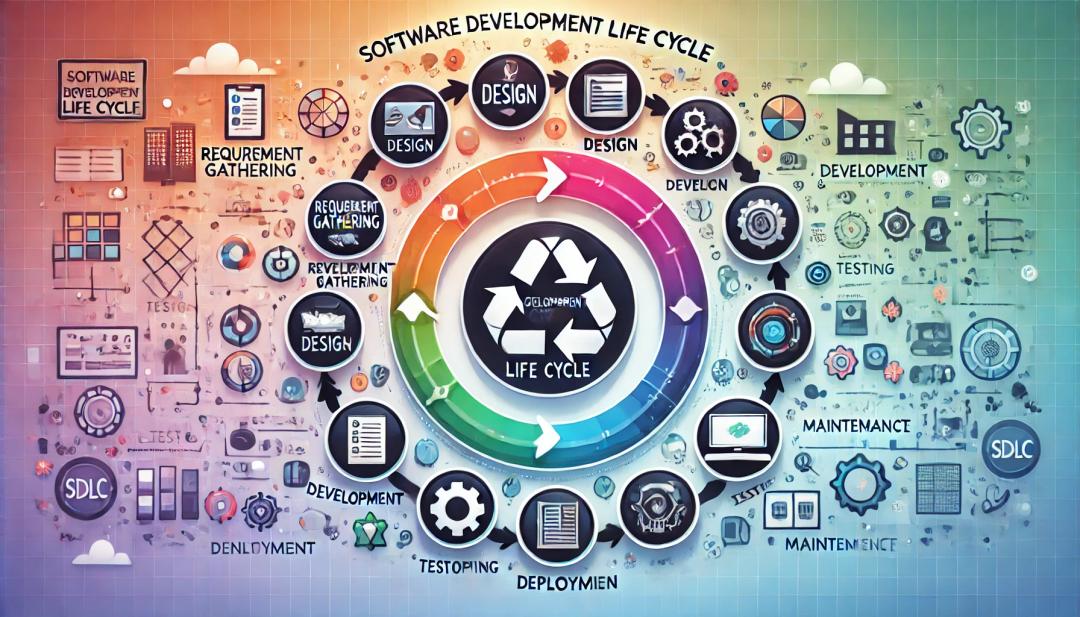Blog Details
Role of AI In Business Analytics
In 2025: AI Trends In Business Intelligence

MUHAMMAD SHEIKH FOYJUL ISLAM
21 Jan 2025
1 min read
Impact of AI on the Role of Business Analysts
AI will change how people and things work in 2025. Leaders who want to use this new technology must know its strengths and weaknesses. This article will discuss how AI in business analytics is changing. We will also show the importance of AI for business analysts and how AI will affect business in the future. Let's read the blog to learn more.
Role of AI In Business Analytics
AI has changed business analytics by letting people find hidden patterns, spot growth possibilities, and make operations run more smoothly. Generative AI tools like ChatGPT, which use deep learning algorithms to understand everyday language, have significantly changed business analytics. These tools have an easy-to-use interface, making accessing information and getting insights easier.
They can automate customer service tasks while giving each person a personalized answer. However, experts must deal with problems and limits before using these powerful tools entirely. Large language models are good at changing natural language text but often have trouble with math and giving accurate answers.
AI isn't new, even though it may seem that way during this hype cycle. It's been around for decades in some form or another. But it's only been in the last few years that sci-fi, which used to be primarily an intellectual interest, has become useful in the real world.
Many people are seeing how useful AI can be in business data. Today, AI is used for many things, such as automating routine tasks like reporting, improving business data, and gaining insights. It is used across the whole revenue stack, from marketing to sales to customer success.
Here are some real-life examples of how AI is used in business to improve goods and services through data analytics:
- Google's search engine uses AI to give users customized search results based on how they use the search engine and what they like.
- Facebook's News Feed sorts material and posts based on how interesting they are to users using AI algorithms.
- Uber's surge pricing changes prices based on supply and demand using AI to analyze data.
- Airbnb's dynamic pricing uses AI systems to set the best prices based on user behaviour and the market's needs.
- The Zestimate from Zillow uses AI-powered data analytics to give exact estimates of a home's worth based on its location, size, and condition, among other things.
Importance of AI For Business Analyst
There are many good reasons to use AI tools for business analysis, such as:
- Increased Efficiency: AI speeds up tasks like gathering and analyzing data, which lets projects finish more quickly. For example, a business analyst (BA) working on a market research project could use UiPath to automate data scraping, saving them time from collecting data by hand.
- Better Decisions: AI tools give experts more information, which helps them make data-based suggestions. For example, a business analyst might use Google Analytics' AI features to find marketing platforms that aren't working well and make the most of their budget.
- Cost Savings: When AI is used to automate chores, less work has to be done by hand, which lowers operational costs. For instance, a business analyst (BA) on a customer service team could use Zendesk's AI-powered reporting system to handle common questions, reducing the need for more staff.
- Better Accuracy: Machine learning models reduce data handling and analysis mistakes, making the results more reliable. For example, a BA who works in banking could use SAS's fraud detection system to find deals that don't seem right.
- Focus on the Big Picture: With AI taking care of everyday tasks, analysts have more time to work on big-picture tasks like involving stakeholders and designing solutions. A business analyst (BA) might work on better customer journey mapping while AI tools look at the data.

AI Tools For Business Analysts
Many BAs may benefit from strong AI tools that help them harness the full potential of existing data, improve decision-making, and deliver better solutions. Here are some of the best AI tools for business analysts.
- Tableau
- ChatGPT
- IBM Watson
- Qlik Sense
- RapidMiner
- MonkeyLearn
- Splunk
- PowerBI
- DataRobot
- H2O.ai
Tableau
Tableau is a powerful tool for visualizing data, making it easy for business analysts to work with and understand data. It has many features, such as creating reports and interactive dashboards, and it works with machine learning algorithms to provide more advanced data. Tableau also has AI-powered tools like AskData that let people who aren't tech-savvy ask questions in simple terms and immediately get visual answers.
It's excellent for business research. After all, it can handle large amounts of data and do complicated calculations because it's scalable and fast.
ChatGPT
ChatGPT is a well-known AI tool that works well and is easy to use, especially for business experts. Its Natural Language Processing features help with collecting, exploring, and interpreting data, which helps people gain insights and make wise choices.
It can also be helpful for more complex jobs, like gathering and analyzing requirements, process and data modelling, functional specifications, user cases, and business strategy. ChatGPT can also be used as a management and communication tool to help make reports, presentations, and other things using stakeholder information. Its tips can help you get more done.
IBM Watson
IBM Watson is a set of artificial intelligence tools made for business researchers who work with a lot of unstructured data. It looks at and processes different kinds of data, like writing, images, and audio, using Natural Language Processing and Machine Learning algorithms.
As a platform for collaboration, it makes it easier for teams and partners to collaborate. IBM Watson also has strong tools for visualizing data that make it easier to find patterns and trends.
Qlik Sense
The business intelligence tool Qlik Sense is easy for anyone to use. It lets users study, analyze, store, and display data. It has collaborative dashboards, real-time integration, and AI-powered ideas that help analysts find helpful information and make better predictions.
It's a good tool for business research because it's easy to use and has dashboards that can be changed to fit your needs.
RapidMiner
RapidMiner is an easy-to-use data management tool that helps business analysts understand how data, workers, and expertise affect the business. Its predictive mode building, automation, and AI models make workflow more efficient, making it easier to extract data and boost output.
MonkeyLearn
MonkeyLearn is an AI-driven tool for natural language processing (NLP) and text analysis. It uses machine learning models to extract useful information from text input.
The easy-to-use interface lets users create, train, and use their own models for different types of research. MonkeyLearn also easily integrates with other tools.
Splunk
Splunk is a flexible business analysis tool that can be accessed from anywhere. It makes it easier for stakeholders to work together as a team. It can get data from many places in real time, process it, and send it to others.
This keeps the analysis up to date and lets you spot trends, chances, or risks quickly. Because it can do so many things, it's a great tool for business research.
PowerBI
PowerBI from Microsoft is an AI-powered platform that makes it easier for business analysts to collect, analyze, and show data. Users can ask questions in plain English using natural language and create their own machine-learning models.
PowerBI can connect to Microsoft's Azure Machine Learning and Excel systems in a number of ways, making it a useful tool for exploring and analyzing data.
DataRobot
DataRobot is an AI-driven machine-learning platform that helps business analysts make quick and accurate predictive models. It automatically handles model selection, feature engineering, and hyper-parameter tuning.
Researchers can focus on figuring out what the results mean instead of building models by hand. This makes the researcher more productive and speeds up the work process.
H2O.ai
H2O.ai gives business experts AI and machine learning tools to help them be more productive and make better decisions. H2O Driverless AI automates jobs like cleaning up data, engineering features, and choosing models, and it has features that make it easy to understand.
The open-source platform H2O-3 has many methods for analyzing data and building models. H2O also lets you build models quickly, even if you know little about data science. This makes it an excellent choice for business experts.
Machine Learning and AI In Business Intelligence Trends and Opportunities
Adding machine learning and artificial intelligence (AI) to business intelligence has changed how data is analyzed, insights are gained, and decisions are made. Predictive analytics is a big trend that helps businesses correctly guess what will happen in the future. This allows companies to run more efficiently, predict customers' wants, and lower their risks. Another trend is the use of chatbots and virtual assistants that AI drives.
These technologies open up new possibilities, such as automated data analysis, finding outliers, predicting demand, and dynamic pricing. These tools help companies improve processes, cut costs, and find new money-making methods. Combining these technologies creates exciting new trends and many chances for businesses to get ahead in the digital world, drive innovation, and reach new heights of success.
Impact of AI On Business In 2025
- "Multimodal AI" will give you more information: Text, images, audio, and video are all combined in multimodal AI to make interactions easier and accuracy better, which is very important for businesses in a data-rich world. It can look at different kinds of data, like market commentary movies in finance or sensor data in manufacturing.
- AI agents will make complicated tasks easier: AI agents will handle workflows, automate processes, and help employees, making sure that customers get the same service across all channels and streamlining operations inside the company.
- Enterprise search will give people the knowledge they need: More advanced enterprise search systems will let users access internal data using voice, video, audio, and picture prompts. This will improve finding information relevant to their jobs in different industries.
- Customer experiences driven by AI will get even better: AI will improve customer experiences by anticipating needs and making connections better. This will lead to personalized suggestions and help across all shopping channels, increasing sales and brand loyalty in the long run.
- AI will improve security systems: By 2025, AI will strengthen security measures, automate jobs, and speed up response times. However, AI will also make things harder for attackers who use it to launch complex attacks. Organizations need to deal with these threats properly. This can be done in finance, manufacturing, and the media to fight risks and false information.

How Will AI Affect Business In The Future?
AI has some problems in business data, but the future looks bright. As technology keeps getting better, we can expect GAI tools that are smarter, can handle more complicated questions better, and give more trustworthy and straightforward answers. Also, more companies will likely use BI tools that AI drives to improve their processes and stay ahead of the competition.
The analysis of income is one area that needs new ideas the most. GAI tools like ChatGPT can tell you a lot about how customers act and how the market changes, but they can't yet give you a complete income analysis engine. Over the next few years, there is a considerable amount of room for growth and progress.
Trendingblogs
Get the best of our content straight to your inbox!
Don’t worry, we don’t spam!





